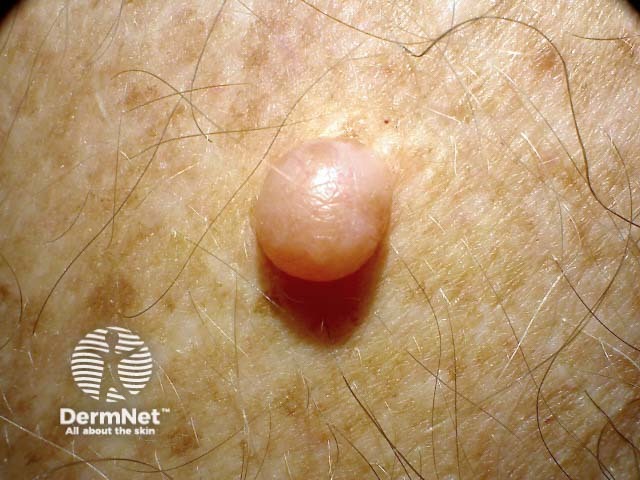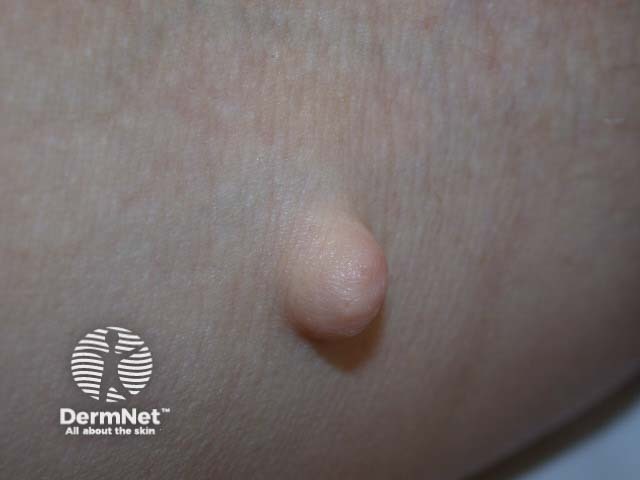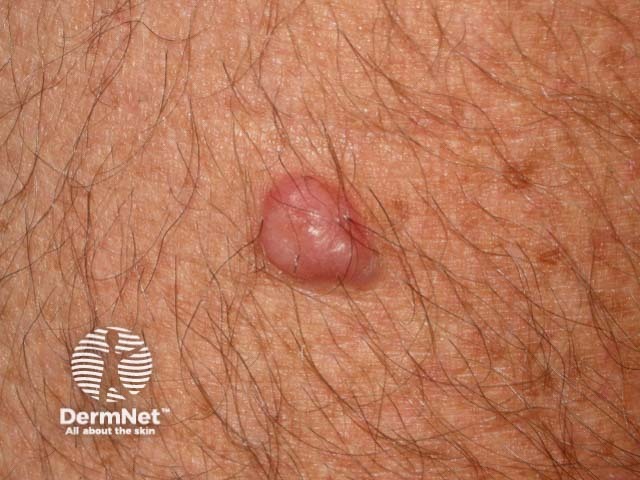Main menu
Common skin conditions

NEWS
Join DermNet PRO
Read more
Quick links
Author: Dr Ebtisam Elghblawi, Dermatologist, Tripoli, Libya. DermNet New Zealand Editor in Chief: Hon A/Prof Amanda Oakley, Dermatologist, Hamilton, New Zealand. Copy edited by Gus Mitchell/Maria McGivern. October 2017.
Introduction Demographics Risk factors Causes Clinical features Diagnosis Complications Treatment
A solitary cutaneous neurofibroma is a common nerve-sheath tumour. It presents as a skin-coloured, soft-to-firm papule or nodule with a smooth surface. Characteristically, pressing on the lesion with a finger causes it to fold in so that the outer surface becomes an inner one, a manoeuvre called "buttonhole invagination".

Solitary neurofibroma

Solitary neurofibroma

Solitary neurofibroma
Neurofibroma is usually diagnosed in young adults. As neurofibromas persist, they may also be diagnosed in older or younger people. It is equally prevalent in both sexes.
Solitary neurofibroma must be distinguished from the genetic disorder neurofibromatosis, in which there are multiple neurofibromas, café-au-lait macules, and other features.
No definitive risk factors have been identified for solitary neurofibroma, which is not inherited.
The cause of solitary neurofibroma is unknown.
Solitary neurofibroma usually arises in second or third decade of life and will be located on the skin of the head and neck, trunk or proximal limbs. Characteristics are:
The diagnosis of solitary neurofibroma may be suspected from its typical clinical features, in the absence of significant signs and symptoms of neurofibromatosis. A neurofibroma is featureless on dermoscopy, distinguishing it from a smooth-surfaced dermal naevus, (which usually shows some areas of pigmentation).
Note that a solitary plexiform neurofibroma, which mostly presents as a bag-like mass on the trunk or proximal extremities, is pathognomonic for neurofibromatosis type 1.
Skin biopsy may be undertaken; the pathology of neurofibroma is diagnostic.
Unlike neurofibromatosis, any concern about solitary neurofibroma is purely cosmetic.
Solitary neurofibroma is a benign tumour and rarely requires any treatment. If there is discomfort, diagnostic uncertainty, or cosmetic concern, it can be surgically excised.